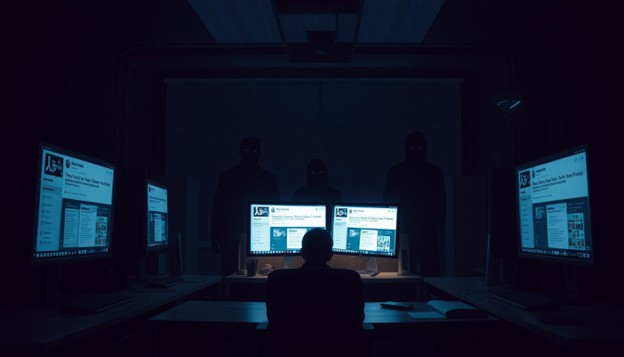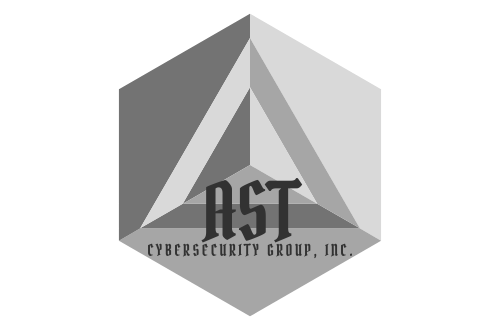Did you know over 40% of U.S. employees have faced cyberbullying at work? This shocking fact shows how bullying has changed with technology. It now hides in digital forms, making it harder to spot.
As work moves online, cyberbullying becomes a big problem. It affects employee mental health and the whole work atmosphere. It’s time to understand and fight this issue.
Exploring cyberbullying’s many faces is key to tackling it. Knowing about it helps employers create safer spaces. It also keeps employees’ mental health in mind. With this knowledge, companies can fight cyberbullying and protect their workers.
Key Takeaways
- Cyberbullying in the workplace affects a significant portion of employees, highlighting the need for immediate attention.
- The evolution of communication technology has transformed traditional bullying into digital harassment.
- Understanding the various forms of cyberbullying is essential for effective intervention.
- Workplace culture and employee mental health can suffer significantly from unaddressed cyberbullying.
- Organizations must prioritize creating supportive environments to combat workplace harassment.
The Rise of Cyberbullying in The Workplace
Digital communication has changed how we work, making online harassment more common. People use emails, instant messaging, and social media every day. This makes it easier for cyberbullying to happen without being seen.
Understanding the Digital Landscape
Businesses use digital tools to work better, but this also brings risks. Online harassment can happen through mean messages or public shaming on social media. It’s hard to keep an eye on these actions, leading to a toxic work environment.
Statistics and Research on Workplace Cyberbullying
Studies show cyberbullying is a big problem. The Workplace Bullying Institute found that about 35% of employees have faced bullying. Cyberbullying is a big part of this, showing the need for action.
| Type of Bullying | Percentage of Employees Affected | Description |
| Verbal Abuse | 27% | Includes yelling, insults, or disparaging remarks. |
| Online Harassment | 35% | Perpetrated through emails or social media, often anonymous. |
| Social Isolation | 15% | Deliberate exclusion from workplace communications. |
| Manipulation of Work Duties | 10% | Assuming control over job responsibilities to undermine an employee. |
It’s crucial to tackle bullying to keep employees safe and create a positive work culture. We need to make digital spaces safe for everyone.
Identifying the 8 Primitive Forms of Cyberbullying
The workplace is now a place where cyberbullying can happen. It can really hurt how happy and productive people are. Knowing about these types is key to making a safer work place. This part talks about the different ways cyberbullying can happen at work.
Harassment Through Emails and Messages
Email harassment is very common. People get mean messages, threats, or unfair criticism online. This can make the work place feel hostile and hurt the person’s feelings.
Social Media Targeting
On social media, coworkers can post mean things about each other. This can hurt someone’s reputation and make teams feel divided. It makes people worried about how they are seen at work.
Spreading Rumors and Misinformation
Spreading false rumors at work can really hurt someone’s career. These lies can spread fast and harm a person’s reputation. It can make people not trust each other and hurt team work.
Intimidation Through Outsourcing Technology
Using technology to scare people is a form of intimidation. For example, watching someone through software can make them feel trapped. It takes away their confidence and freedom at work.
Exclusion from Workplace Communication
Being left out of important talks or decisions is a form of cyberbullying. It makes someone feel alone and unhappy at work. It can make them not want to be part of the team anymore.

Impacts of Cyberbullying on Employees
Cyberbullying affects more than just the person being bullied. It changes the whole work environment and how everyone works together. Looking at how bullying makes people feel and how it changes the workplace helps make a better place to work.
Emotional and Psychological Effects
People who are bullied online often feel very stressed. They might feel:
- Anxiety that makes it hard to do everyday things
- Depression that makes them want to stay away from others
- Declines in self-esteem that hurt their personal and work life
These feelings show how bullying can deeply affect someone’s mind and emotions, even after it stops.
Effects on Workplace Culture and Productivity
Cyberbullying can make the workplace very bad. Studies show that places with bullying have:
- More employee turnover because of a bad work place
- Lowered employee morale that hurts teamwork
- Less productivity, which can hurt the company’s success
Ignoring the effects of bullying can make it hard for teams to work well together and come up with new ideas.
The Long-term Consequences for Victims
The effects of bullying can last a long time. Victims might deal with:
- Chronic stress that can cause serious health problems
- Setbacks in their career that can make it hard to move forward
- It’s hard to trust people at work again
Studies from the American Psychological Association show that bullying can affect someone’s career for years, making it hard to succeed.
| Impact Type | Examples | Long-term Effects |
| Emotional | Anxiety, Depression | Chronic Stress, Low Self-esteem |
| Workplace Culture | High Turnover, Low Morale | Decreased Collaboration and Innovation |
| Productivity | Reduced Performance | Impact on Overall Organizational Success |
Strategies to Combat Cyberbullying in The Workplace
Dealing with cyberbullying at work needs many steps to make a better place for everyone. Companies can take strong actions to stop cyberbullying. This ensures all workers are safe and happy.
Creating a Supportive Work Environment
A good workplace is one where everyone is respected and included. This stops bad behavior. Employers should work on making a place where people get along well.
They can do this by organizing team activities. These help people bond and feel part of the team. This makes bullying less likely.
Implementing Policies and Training Programs
Having clear rules against bullying is key. Companies must make strong policies. These should say what’s not allowed and how to report problems.
Training programs are also important. They teach people how to spot and deal with bullying. This helps everyone know how to handle it.
Encouraging Open Communication
Talking openly is important for a safe workplace. Companies should make it easy for people to share their worries. This builds trust and makes everyone feel heard.
Having safe ways to report problems is crucial. It lets workers know they can get help without fear. This makes everyone more likely to speak up.

| Strategy | Description | Benefits |
| Supportive Work Environment | Promotes respect and inclusion among employees. | Reduces instances of toxic behavior. |
| Bullying Policies | Defines unacceptable behavior with clear reporting procedures. | Establishes a framework for accountability. |
| Employee Training Programs | Educates employees about cyberbullying and intervention strategies. | Equips staff with the tools for recognition and response. |
| Open Communication | Encourages staff to report incidents through safe channels. | Creates a culture of transparency and trust. |
Conclusion
Cyberbullying is a big problem in the workplace, making it hard for employees to feel safe and happy. As we use more digital tools, it’s more important than ever to tackle cyberbullying. Employers and HR teams need to step up and understand how it hurts mental health at work.
Creating a safe and friendly workplace is a team effort. We need clear rules, open talks, and training to fight cyberbullying. These steps help reduce harm and build a culture of respect and support.
It’s key for everyone at work to stay alert and work together. By focusing on mental health and safety, we can make our workplaces better. Fighting cyberbullying is a team effort that makes our workplaces healthier for everyone.
FAQ
What is cyberbullying in the workplace?
Cyberbullying in the workplace means using digital tools like emails and social media to bully coworkers. It can really hurt someone’s mental health and change the work culture.
How prevalent is cyberbullying among employees?
Almost 35% of workers have faced bullying at work, with more focusing on digital bullying. This shows why companies need to act fast to stop it.
What are the different forms of cyberbullying in a professional setting?
There are eight types of cyberbullying at work. These include email harassment, social media attacks, spreading false rumors, and being left out of work talks. Knowing these types helps in stopping bullying.
What emotional impacts can cyberbullying have on employees?
Cyberbullying can really hurt someone’s feelings and mind. It can cause anxiety, depression, and lower self-confidence. These effects can last a long time, affecting both work and personal life.
How does cyberbullying affect workplace culture and productivity?
Cyberbullying can make the work place worse. It can lower morale, teamwork, and productivity. Places with bullying often see less employee involvement and more people leaving.
What strategies can organizations implement to combat cyberbullying?
Companies can fight cyberbullying by making a supportive work place. They should have clear rules against bullying and train employees often. Also, having open talks between bosses and workers helps make a safer place where bullying can be reported easily.
What long-term consequences can victims of workplace cyberbullying face?
Victims might deal with ongoing stress, anxiety, and career problems even after the bullying stops. These lasting effects can really harm their career and happiness. So, it’s very important for workplaces to deal with bullying quickly.

